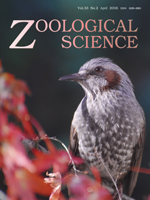We used a differential display in combination with complementary DNA (cDNA) cloning approach to isolate a novel rat gene LOC690919 with an open reading frame of 1227-length nucleotides encoding a protein of 409 amino acids. This gene was designated as Spergen-4 (a spermatogenic cell-specific gene-4). Spergen-4 mRNA was highly expressed in testis, and its expression was detected in rat testis starting at three weeks of postnatal development and persisting up to adulthood. Mouse and human orthologs, which lack N-terminal 77 amino acid residues of rat Spegen-4, were found in the database. Immunofluorescence microscopy and immunoblot analysis demonstrated that Spergen-4 was not expressed in spermatogonia, spermatocytes, and round spermatids, but was restrictedly detected at sperm head, cytoplasm, and developing flagella of elongated spermatids in rat testis. In mature spermatozoa, Spergen-4 was detected at the acrosome region as well as the principal piece of flagella. Spergen-4 immunosignal disappeared from sperm heads on acrosome reaction induced by progesterone. These data suggest that Spergen-4 integrated into elongated spermatids during spermiogenesis serves as a constituent for acrosome region and flagella of rat spermatozoa.
How to translate text using browser tools
1 April 2016
Molecular Cloning of Spergen-4, Encoding a Spermatogenic Cell-Specific Protein Associated with Sperm Flagella and the Acrosome Region in Rat Spermatozoa
Ali Howida,
Elsaid Salaheldeen,
Hiroshi Iida
ACCESS THE FULL ARTICLE

Zoological Science
Vol. 33 • No. 2
April 2016
Vol. 33 • No. 2
April 2016
acrosome
fibrous sheath
flagellum
Spergen-4
sperm




